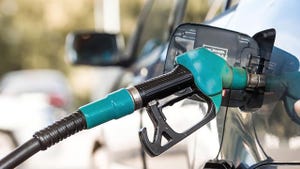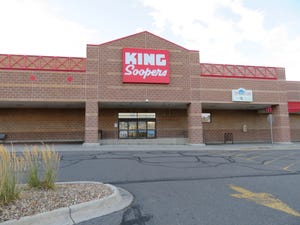Carbon Upsets: Finding Reliable Offset ProgramsCarbon Upsets: Finding Reliable Offset Programs
Greenhouse gases such as carbon dioxide, methane, nitrous oxide and hydrofluorocarbons are increasingly blamed as one of the primary causes of global warming. Investing in carbon offsetting, also known as carbon credits, is one way for businesses and consumers to help decrease these greenhouse gas emissions.
April 28, 2008
LIZ PARKS
Greenhouse gases such as carbon dioxide, methane, nitrous oxide and hydrofluorocarbons are increasingly blamed as one of the primary causes of global warming. Investing in carbon offsetting, also known as carbon credits, is one way for businesses and consumers to help decrease these greenhouse gas emissions.
At its most basic, a carbon “offset” is an emissions reduction credit from another organization’s project. By paying a third party to reduce emissions elsewhere, the purchaser of carbon offsets/credits compensates for the emissions created in their respective businesses or homes.
Offsets are typically measured in tons of CO2-equivalents (or ‘CO2e’) and are bought and sold through a number of international brokers, online retailers and trading platforms.
There are seven major greenhouse gases, measured in tons of carbon dioxide and carbon dioxide equivalents, and they all have varying degrees of potential to contribute to global warming.
Many types of activities can generate carbon offsets. Renewable energy such as wind farms, installations of solar, small hydro, geothermal and biomass energy can all create carbon offsets by displacing fossil fuels.
Other types of offsets available for sale on the market include those resulting from energy-efficiency projects, methane capture from landfills or livestock, destruction of potent greenhouse gases such as halocarbons, and carbon sequestration projects through reforestation or agriculture. Anything that absorbs carbon dioxide from the atmosphere potentially qualifies as an offset.
The standard for measuring how much fossil fuel is consumed by business operations is calculated in conformity with the Greenhouse Gas Protocol (www.ghgprotocol.org), developed in keeping with internationally endorsed standards of reporting and accounting that are backed by both the World Business Council for Sustainable Development and the World Resources Institute, two prestigious non-governmental environmental organizations. The standard is used to measure carbon emissions offsets for an organizational footprint calculation. The greenhouse gas, or GHG, calculation is used internally by many companies seeking to reduce their carbon costs, including Ford Motor Co., IKEA International, Intel and Sony Electronics.
The GHG can be broken down by business operation — for example, measuring the emissions from electricity and natural gas, or measuring the emissions from transporting products or air travel for business.
The first step in determining how many carbon offsets to buy is figuring out the carbon footprint for a particular physical location or production process, and that means doing a greenhouse gas “inventory” to determine the amount of gases that a business or individual may be responsible for producing.
For physical locations, the focus can be on individual stores, distribution centers or corporate headquarters, or some combination of any or all of the above. That process is described as creating an organizational footprint calculation.
Creating an organizational footprint becomes, in effect, an exercise of drawing ever larger concentric circles. The first circle could cover a single store and evaluate only the amounts of fossil-fuel energies used to operate that unit. A larger circle might also consider all the trucks bringing products to the stores.
If desired, businesses can draw ever bigger circles to include distribution points, individual products and the manufacturing processes. The first exercise, however, is determining what the circle is or should be and where a business wants to start.
When a business chooses to calculate how much carbon dioxide it releases, it does a life cycle assessment calculation based on the International Standards Organization (ISO) 14040 carbon emissions life cycle assessment standard. The process of auditing, verifying and certifying how many credits the business needs to offset greenhouse gas emissions is very complex. It entails, among other things, the calculation of all the greenhouse gas and greenhouse gas equivalent inputs and outputs of a product, from farming and raw material extraction all the way to disposal of the product’s packaging.
Once the product’s life cycle assessment calculation is complete, audited and then verified, the manufacturer or product producer could then put a “carbon label” on its product and packaging. A carbon label means that this producer has done a complete life cycle assessment of the product, creating a benchmark for measuring the amount of carbon dioxide and carbon dioxide equivalents released in the life cycle of that product.
Another label, a carbon-neutral or carbon-free label, would show consumers how much carbon dioxide had been offset in the production of a particular product and possibly, its packaging.
Because the offset market is largely unregulated, buyers need to be careful when they decide to purchase carbon offsets.
A good way to make sure that an offset purchase is making a positive contribution to the climate is to use only those that meet recognized standards that satisfy certain criteria.
Currently, a number of certifications exists for carbon offsets, including the Voluntary Carbon Standard (VCS), Green-e Climate and The Gold Standard. More standards are being announced regularly. Each of these standards differs in key ways, with some being more rigorous than others. Some companies use complex methodologies to verify the validity of a project and certify the tons of greenhouse gases offset by each project. They include the internationally recognized Clean Development Mechanism, the Voluntary Carbon Standard and the California Climate Action Registry, which deals solely with projects in that state.
There are a number of sellers of carbon offsets, and many provide assistance in calculating how many greenhouse gases any consumer or company may be responsible for, and therefore how many tons of greenhouse gas credits they need to buy to offset those gases. One of the most frequently recommended carbon emissions calculators is put out by the World Resources Institute (WRI), and available at www.ghgprotocol.org.
The Natural Resources Defense Council, a national, nonprofit organization of scientists, lawyers and environmental specialists, recommends the carbon-offset certification programs administered by the Center for Resource Solutions, through its Green-e Climate program, and the California Climate Action Registry.
The Center for Resource Solutions also audits what happens to a carbon-offset credit, using a unit called a Verified Emission Reduction. Currently it is the only organization tracking the complete VER chain of custody and ensuring it matches the claims made by offset sellers. Green-e Climate audits the VER from the point of certification all the way through to purchase by a business or consumer. That process ensures that once a VER has been used, it cannot be resold and used again. That credit — usually assigned an electronic number — is retired from the trading process.
Retailers that buy carbon offsets/credits can market their commitment to environmentally friendly initiatives through in-store signage, advertising and public relations.
Offsets Have Labels, Too
The independent Green-e Climate certification requires offset sellers to provide a Product Content Label that shows where greenhouse gas emissions reductions came from, the country where the emissions reductions took place, and which organizations certified that those emissions reductions were equivalent to the tonnage claimed in the credit.
The process makes it easier for the buyer of that credit to identify its authenticity and also to be certain that the credit, once purchased by them, is now retired and cannot be resold. To find Green-e Climate Certified Offsets, go to www.green-e.org/climate. — LP
About the Author
You May Also Like




